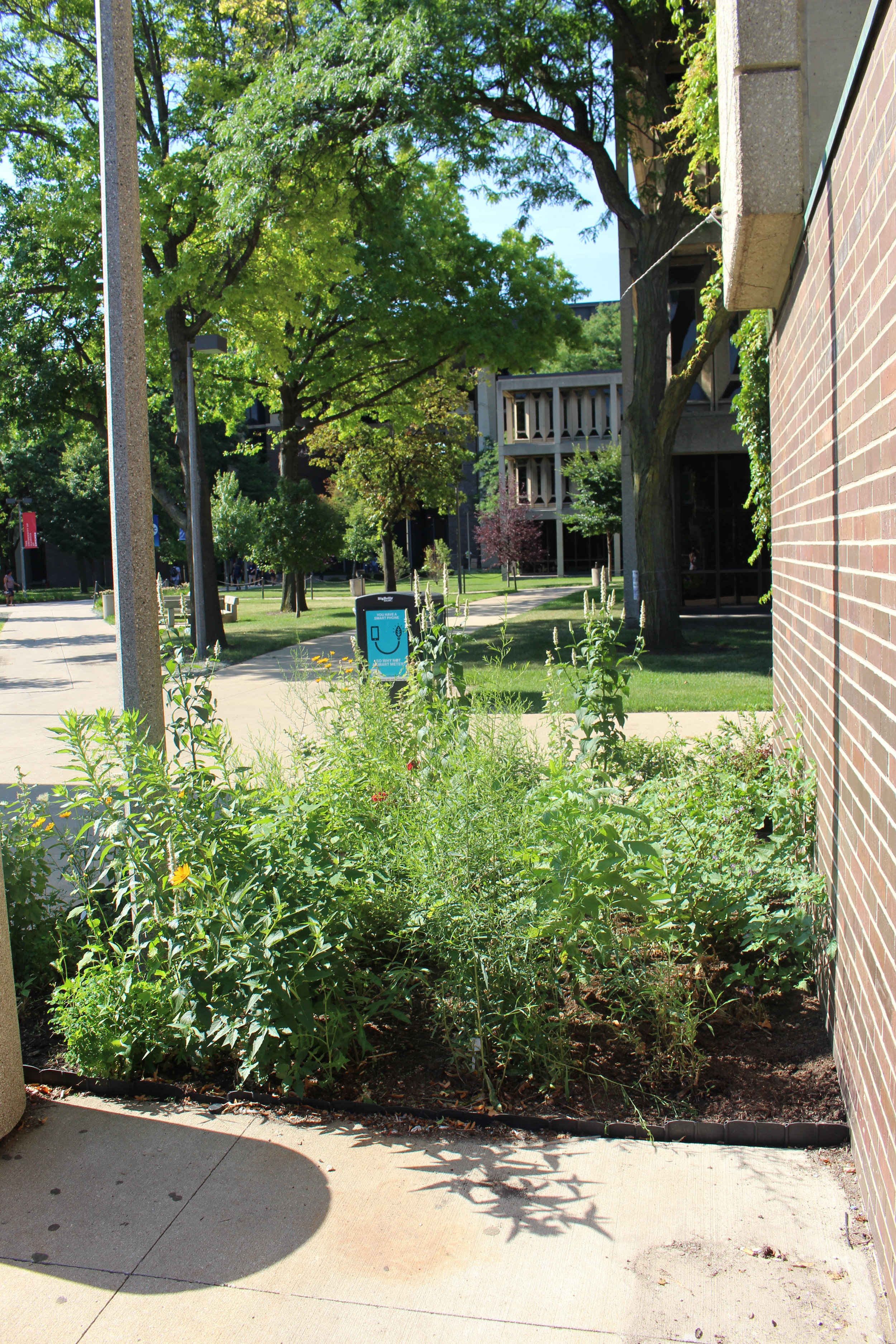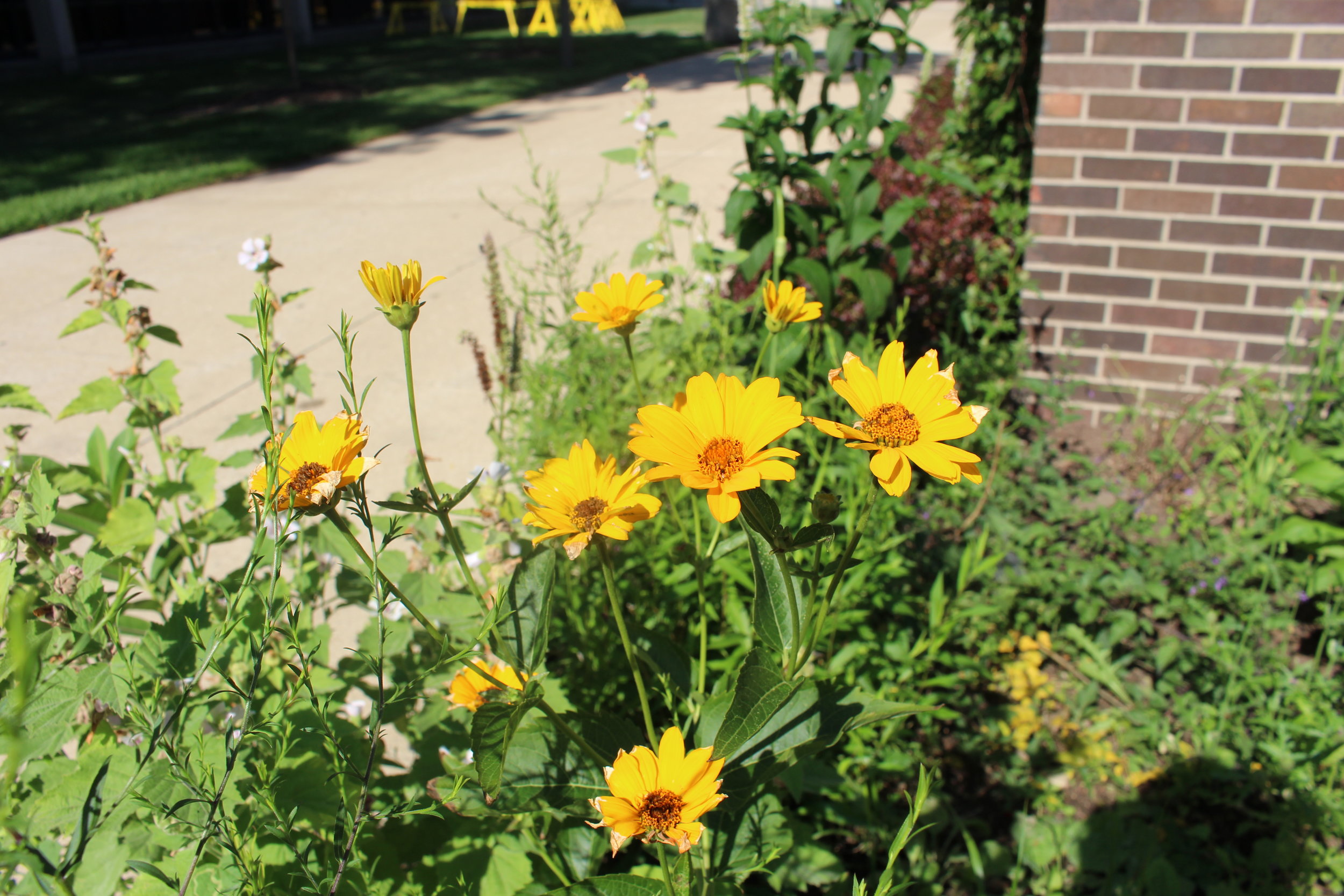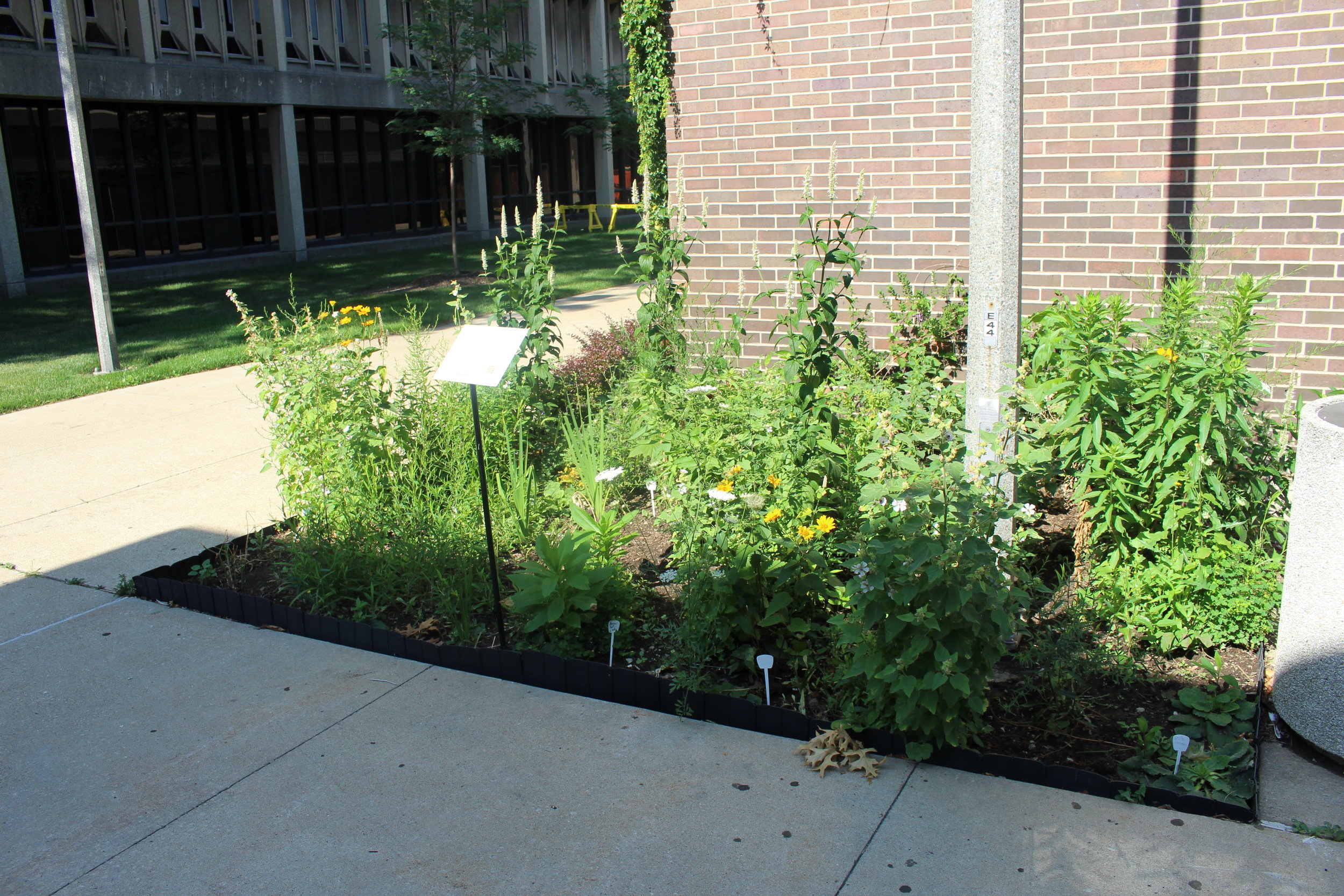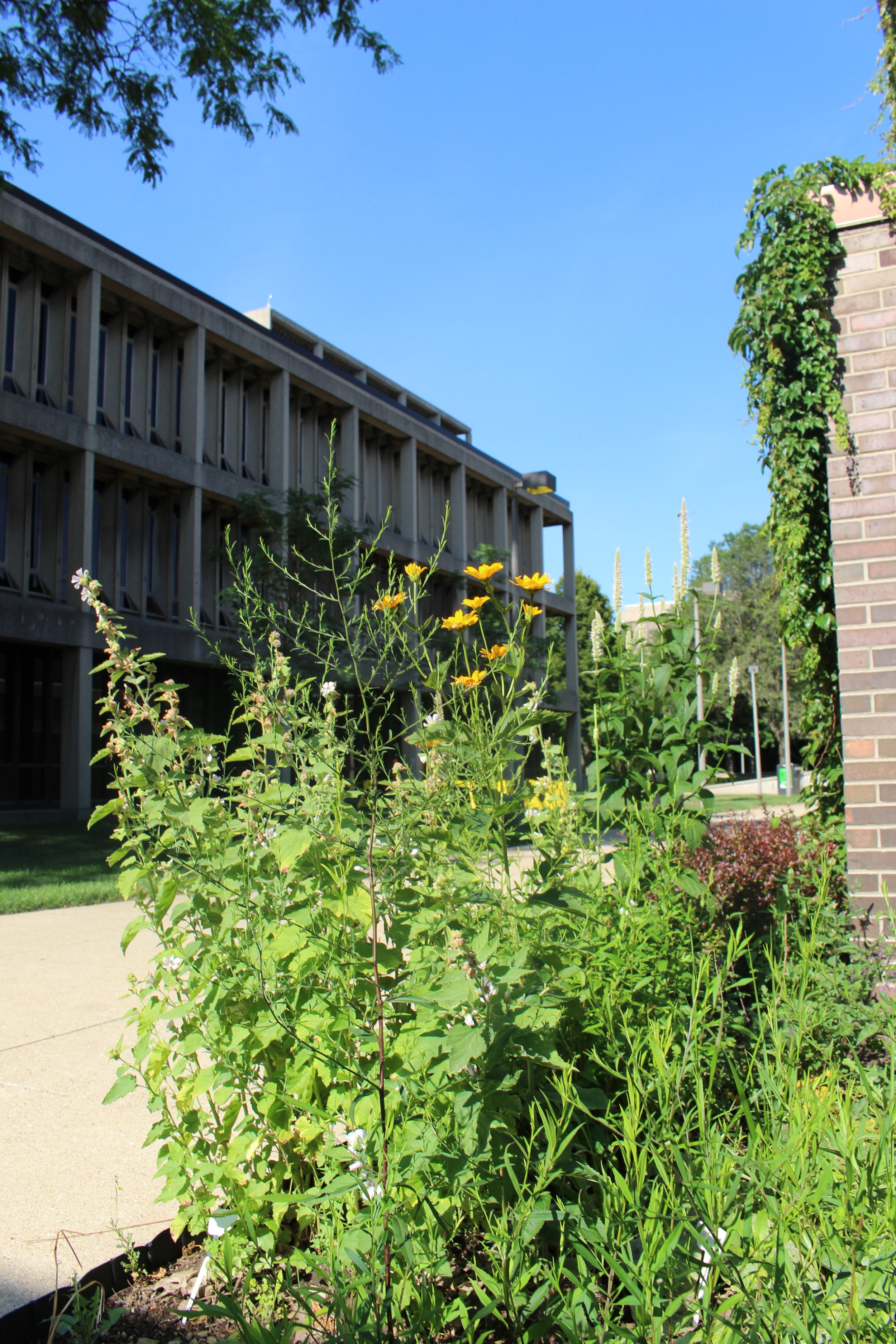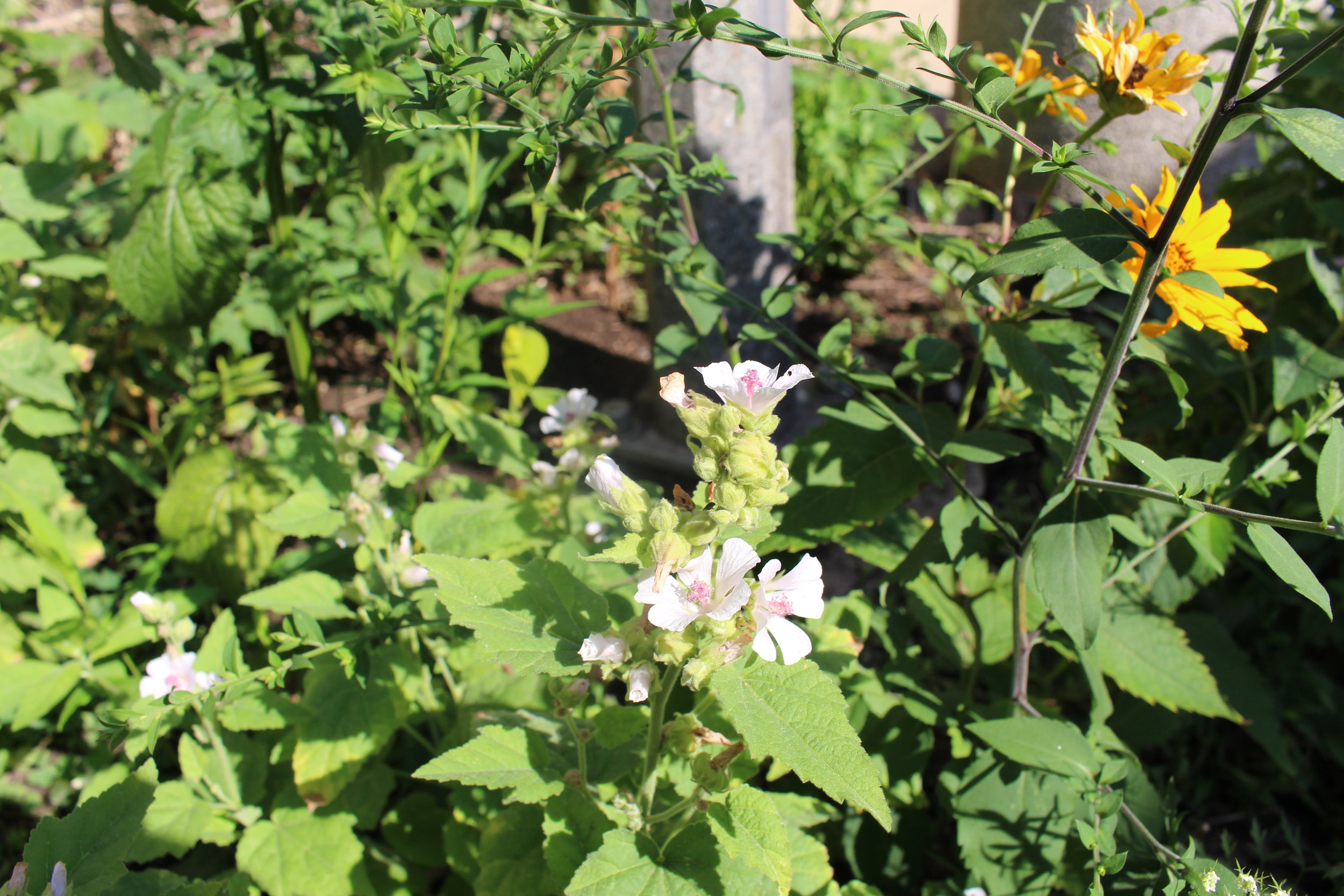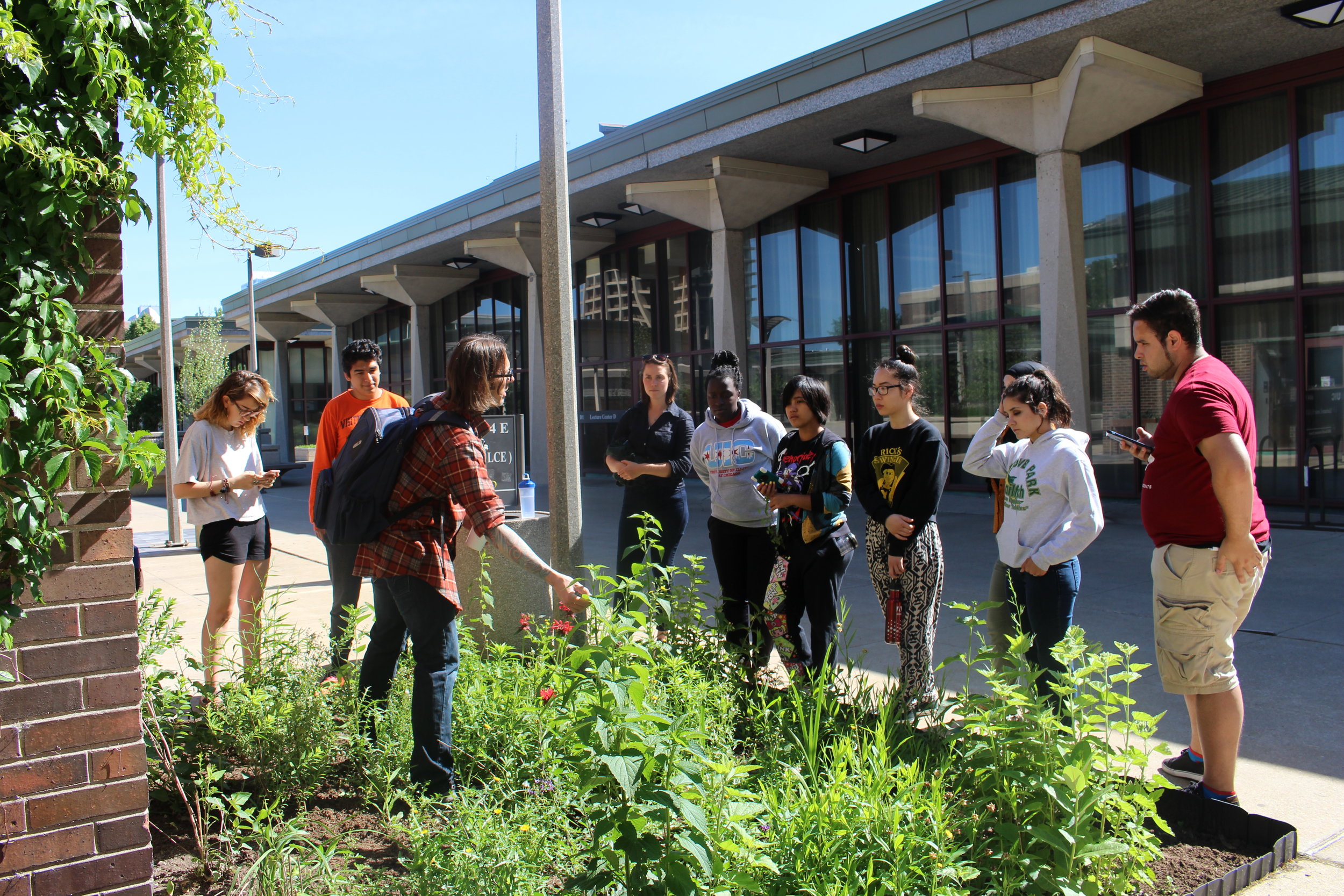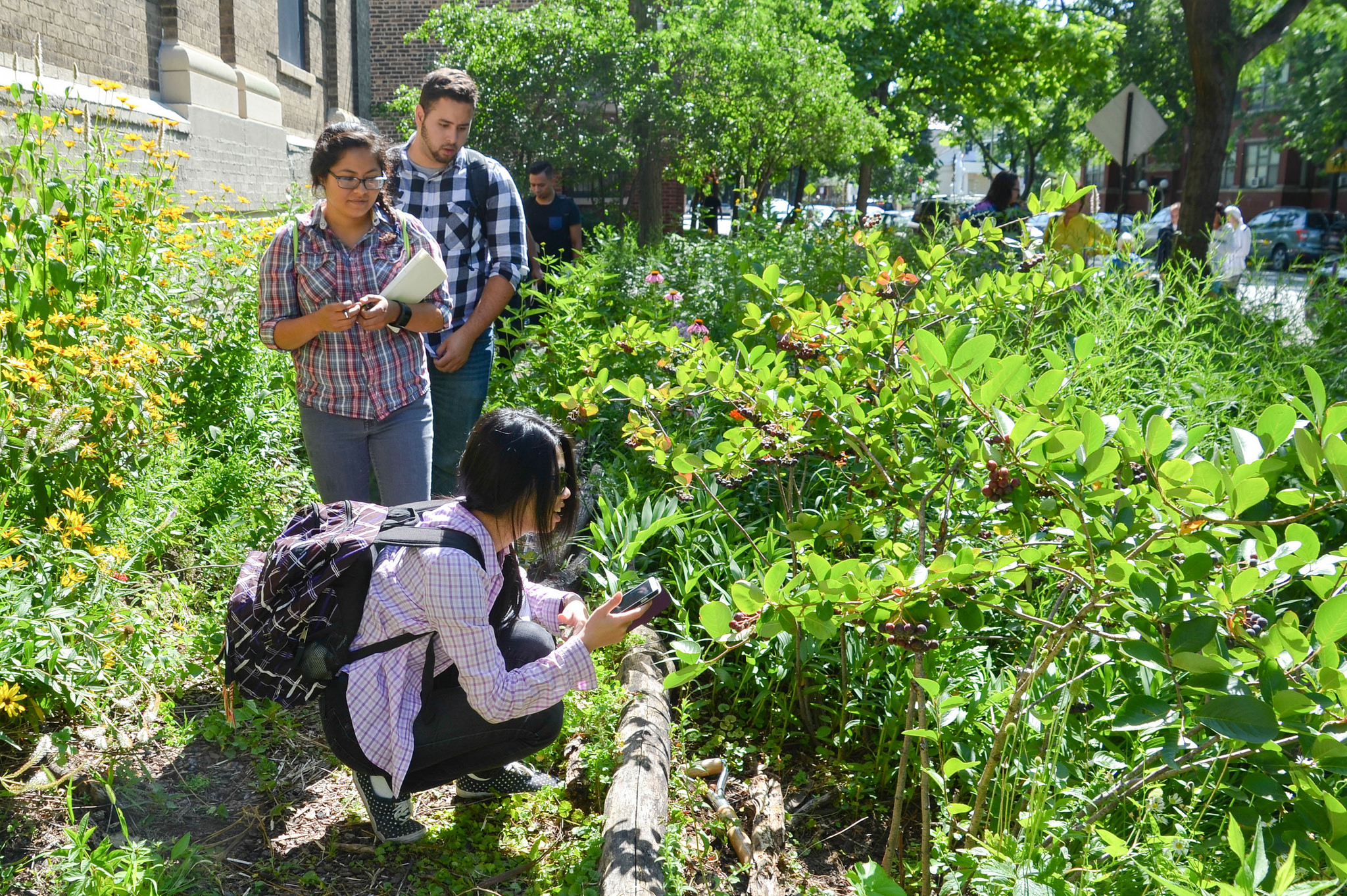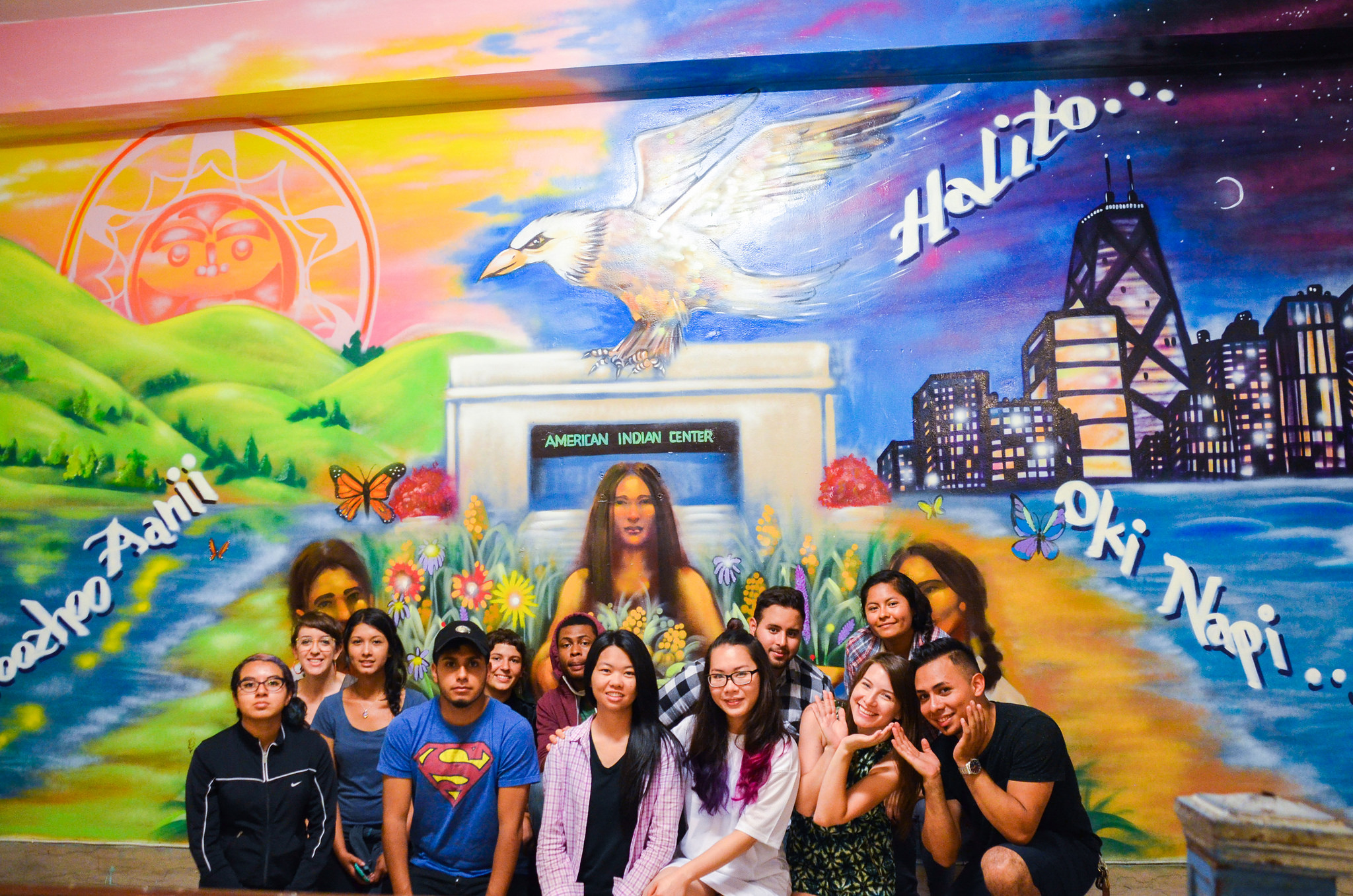Shikaakwa is the Myami Tribe’s name for the region on which the city and campus sits and is said to be associated in the naming of “Chicago”. It refers to the marshy environment where wild leeks, garlic, and onions grow, giving the area a strong and pungent fragrance. Other tribes of the region referred the area as the place of onions (Bodéwadmi) and legends of a great skunk who devoured humans and covered the land in its pungent spray (Hoĉąk).
Indigenous land speaks not only to the physical nature, but also to those who live and have lived on the land and this satellite provokes the UIC community to think about the deep history of the region, both ecological and human, and see that this land has always been occupied and was not discovered.
native plants and native peoples
The Shikaakwa Satellite connects to the rest of the garden in that it also speaks of transitions, migrations, and adapting to the urban environment. While there have always been indigenous wildlife, plants and peoples; the periods where American Indians were forcibly removed from their land and farming/development destroyed the prairies that use to cover all of Illinois. However both have persisted in Chicago and the denizens of the prairie, growing through the cracks in the concrete and urban waste areas. Many Native Peoples and plants migrated to Chicago and as the climate changes some went north, south, and others adapting completely to the modern urban landscape. The satellite is no different like the other gardens, which are filled with edible plants, but the Shikaakwa Garden is made up of entirely wild plants providing food and medicine reminding us that the weeds of the city often provide sustenance to all life.
American indian center of chicago
AIC Medicinal Prairie Garden began in 2003 as an attempt to grow medicinal plants traditionally used by members of the Chicago American Indian community. As it grew and with its renovation in 2007, the garden became a restored urban prairie with 179 different species of plants and fungi, along with an array of indigenous wildlife. The garden provides a space for harvesting traditional medicinal, ceremonial, and edible plants, and acts as an outdoor classroom for youth and adults. The plants that now occupy the UIC campus, represent a small portion of the larger garden and is seen by many in the Native American community as an extension of the AIC’s garden. With this in mind, treat the plants well, they are someone’s relatives that are still connected to the Native American community in Chicago.
SCRAPBOOK project
During the summer of 2017, UIC Heritage Garden Interns worked with members of the American Indian Chicago community to develop a scrapbook. This creative project catalogues central themes of our Shikaakwa garden, stories from the community, and presents a new and engaging way to learn about heritage plants.


